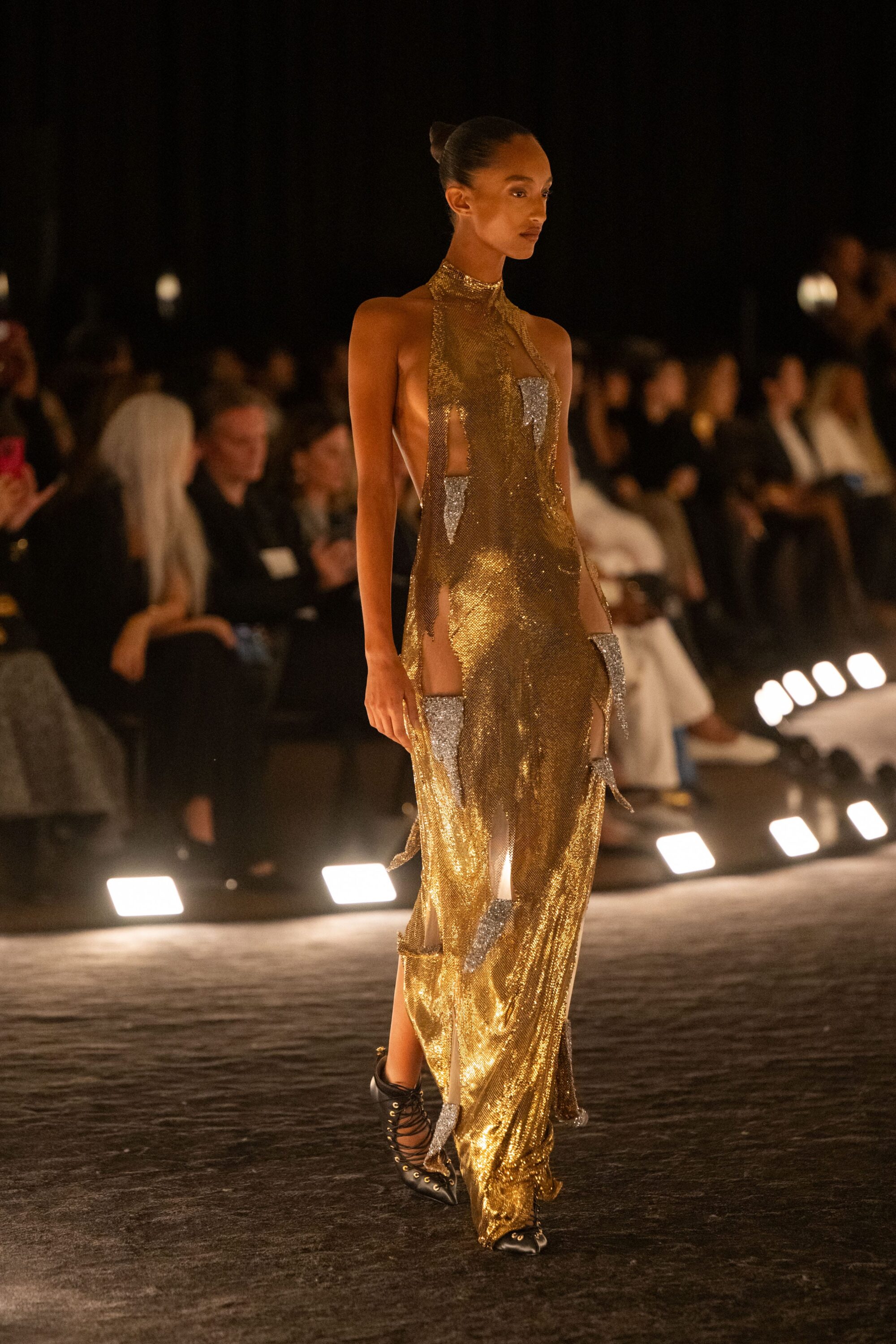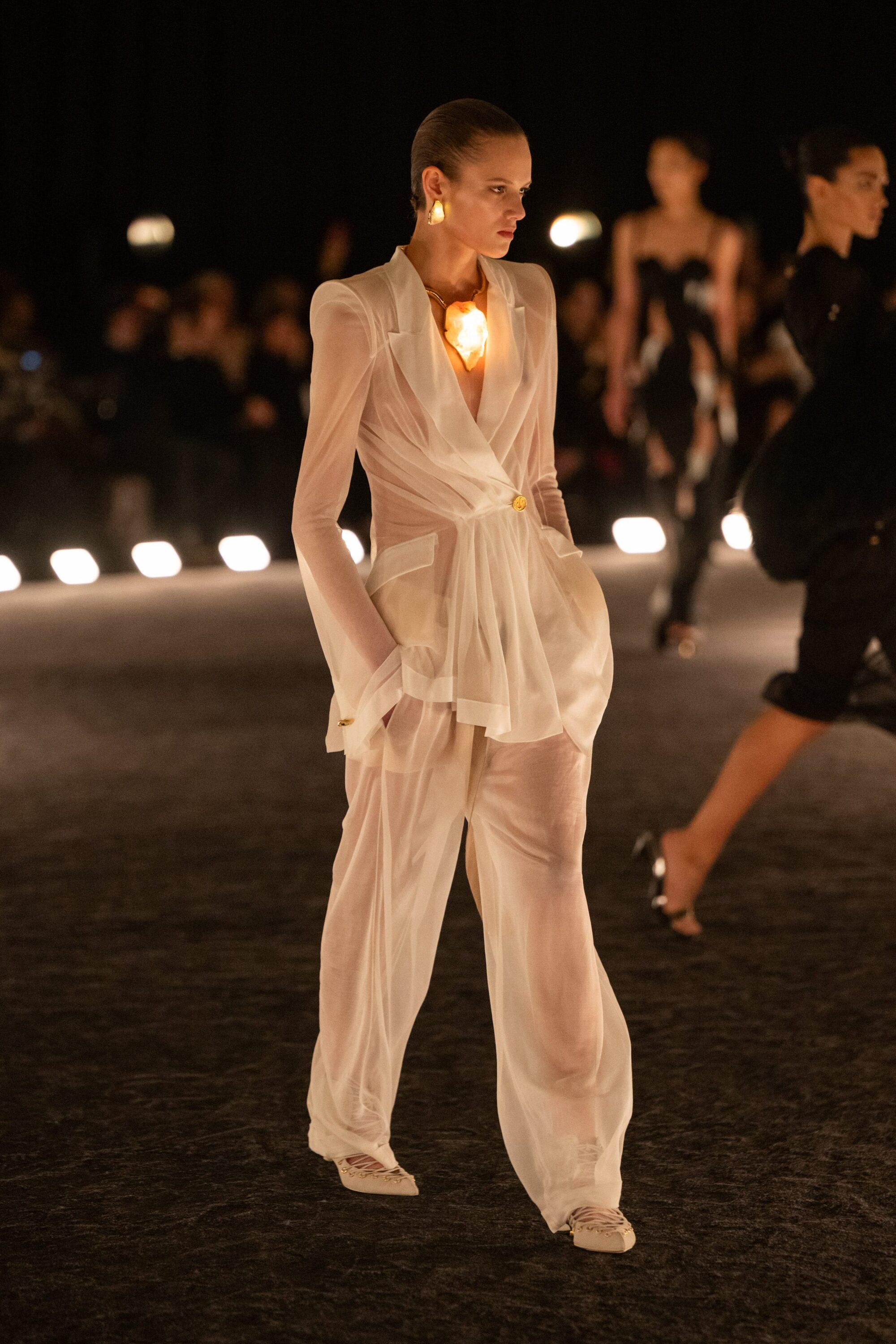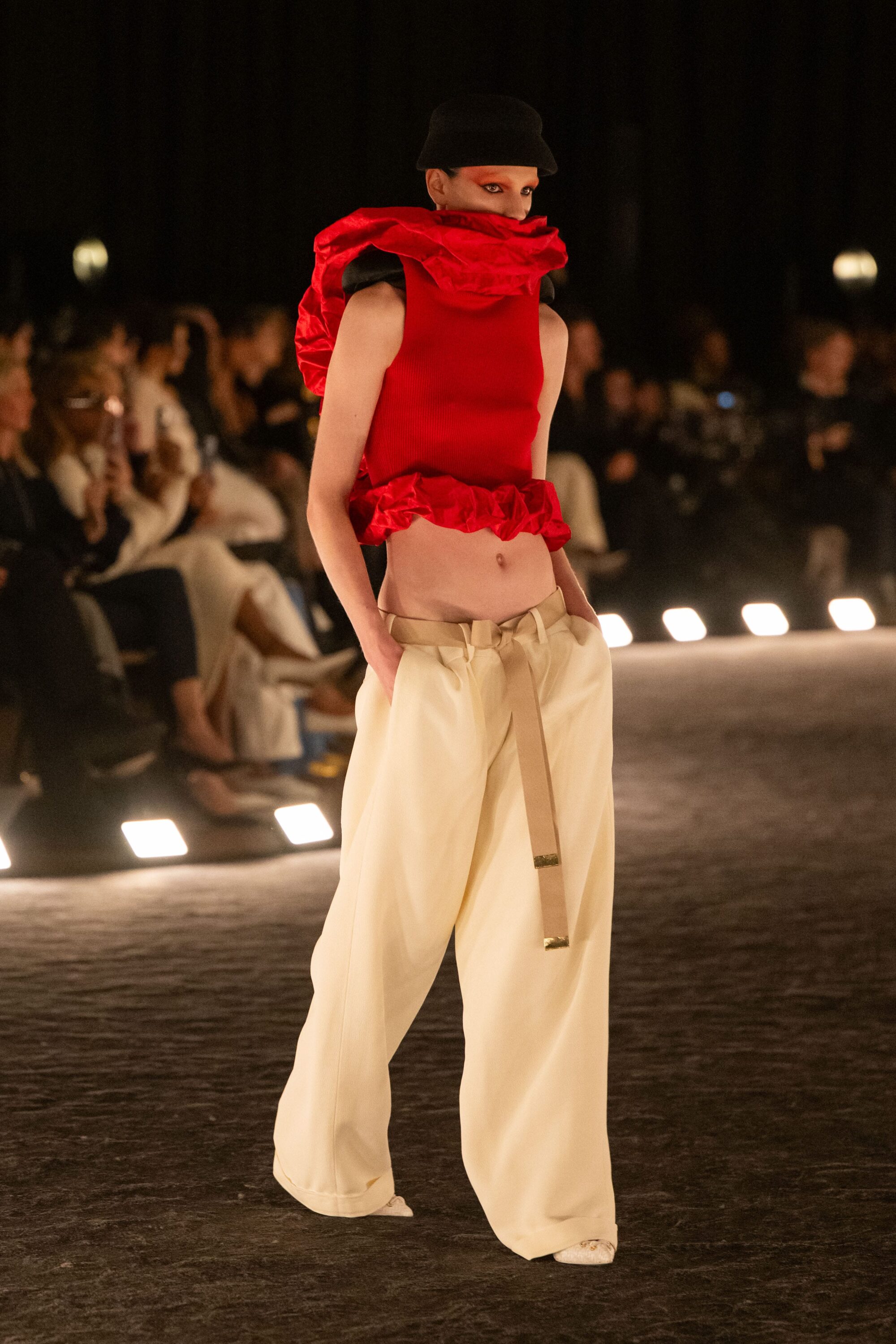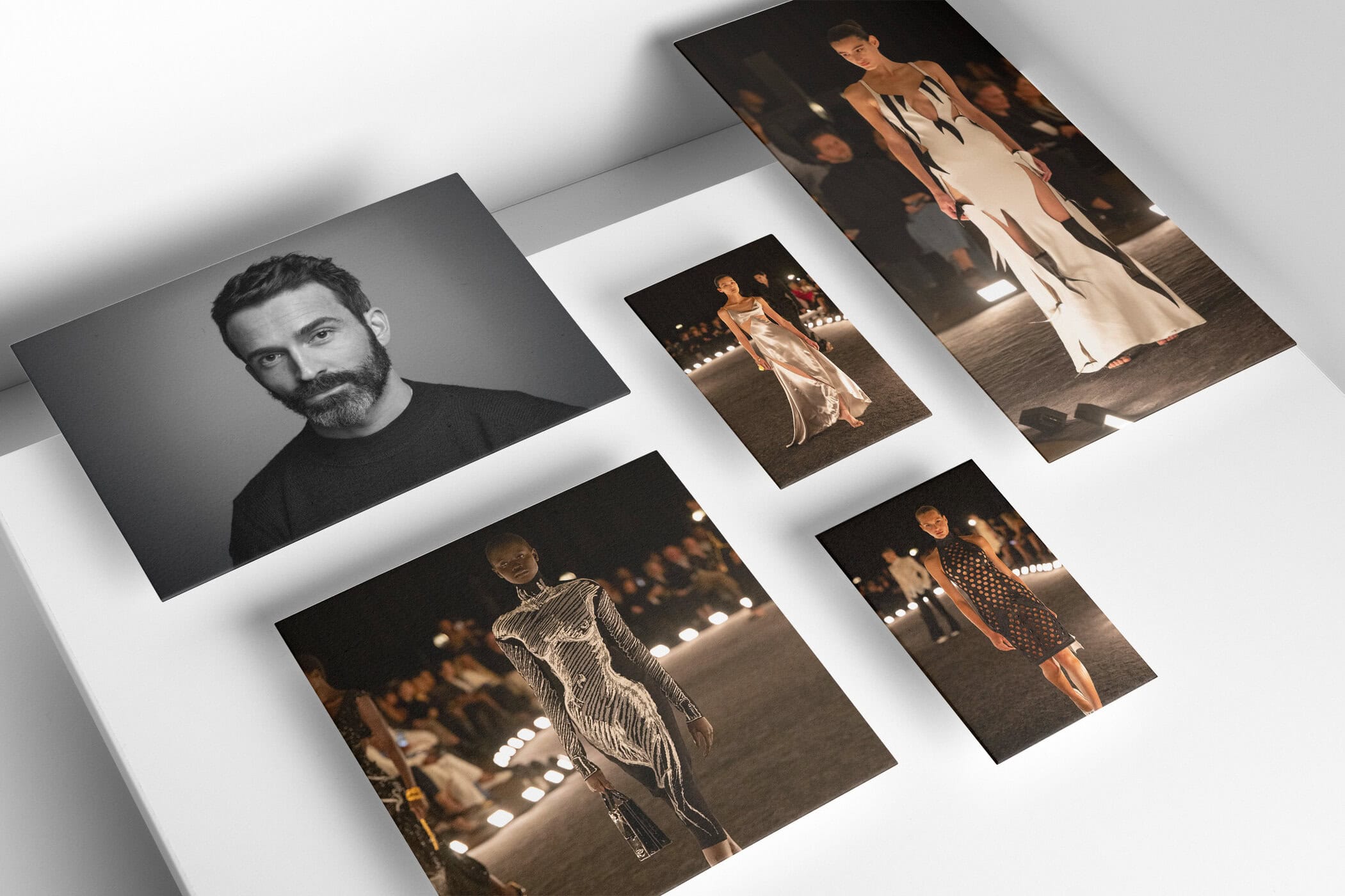The American Creative Director Draws On The House’s Surreal Roots And Sharp Tailoring To Deliver A Spring 2026 Collection Of Sculptural Ease And Unapologetic Drama
By Kenneth Richard
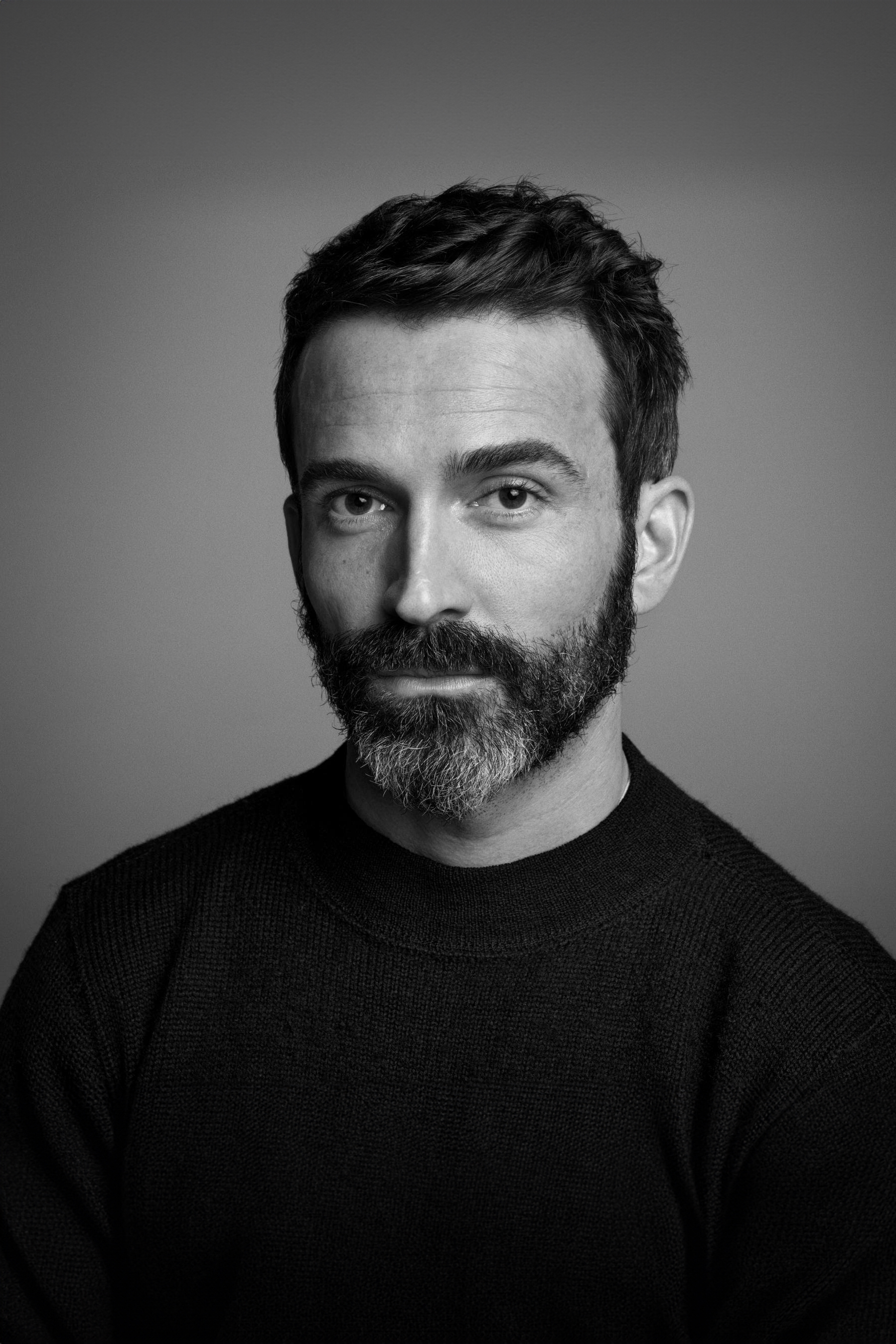
Daniel Roseberry stood in a tailored jacket, every detail of his grooming immaculate. Thoughtful, composed, and cerebral, he carried the air of a designer fully aware of both his craft and his stage. In conversation, his manner recalls Tom Ford in his prime — controlled, articulate, yet suffused with an intensity that suggests ideas never stop racing beneath the surface. Since his appointment in 2019 as the first American to lead a Parisian couture house, Roseberry has transformed Schiaparelli into fashion’s most audacious theater.
“I’ll take that tagline,” he said with a smile when the phrase. “Extreme wearability” came up. Then, with a tilt of wit, he clarified: “I wanted to do that, yes, but always maintain the extreme drama that sucks the air out of the room when you wear Schiaparelli.”
That duality — radical ease fused with radical spectacle — defined his Spring 2026 collection. The corsetry and lacing that once anchored his silhouettes were stripped away, leaving bias-cut gowns to sculpt fluidly around the body. Tailoring was razor sharp, knitwear unexpectedly cinematic. “All of that knitwear with the red carpet drama, but done in knit — that felt revelatory to me,” he said.
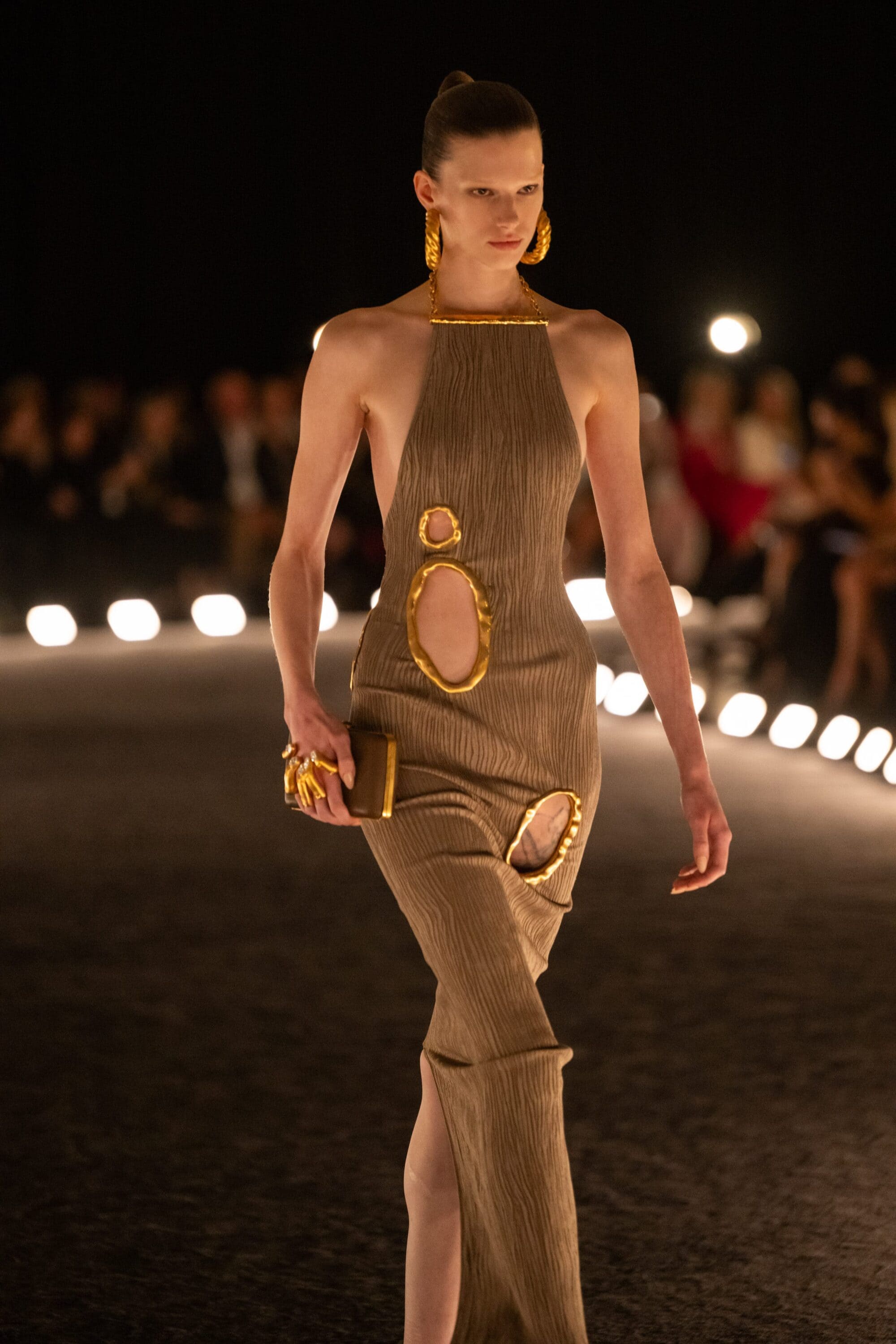
It was a season also tied to history. With the V&A’s Schiaparelli exhibition on the horizon, Roseberry revisited Elsa’s own language of shock and structure. “It was about going back to the roots of the house — that toy soldier silhouette, the sharp shoulder, the nipped waist — and these iconic graphic things she was a master of,” he explained. Instead of surface decoration, he worked with flayed silk crepe, sculpting dresses that echoed Elsa’s surreal verve in modern form. His “rag” gowns appeared like scraps until worn, when they transformed into sculpture — proof that for Roseberry, the body itself remains the ultimate collaborator.
Jewelry extended the dialogue. Necklaces carved from salt rocks hummed with raw energy, a beating-heart pendant recalled couture theatrics yet felt startlingly new. Faux fur spun from paintbrushes nodded to Elsa’s playful surrealism. “People don’t buy Schiaparelli,” he said, pausing with a wry smile. “They collect Schiaparelli.”
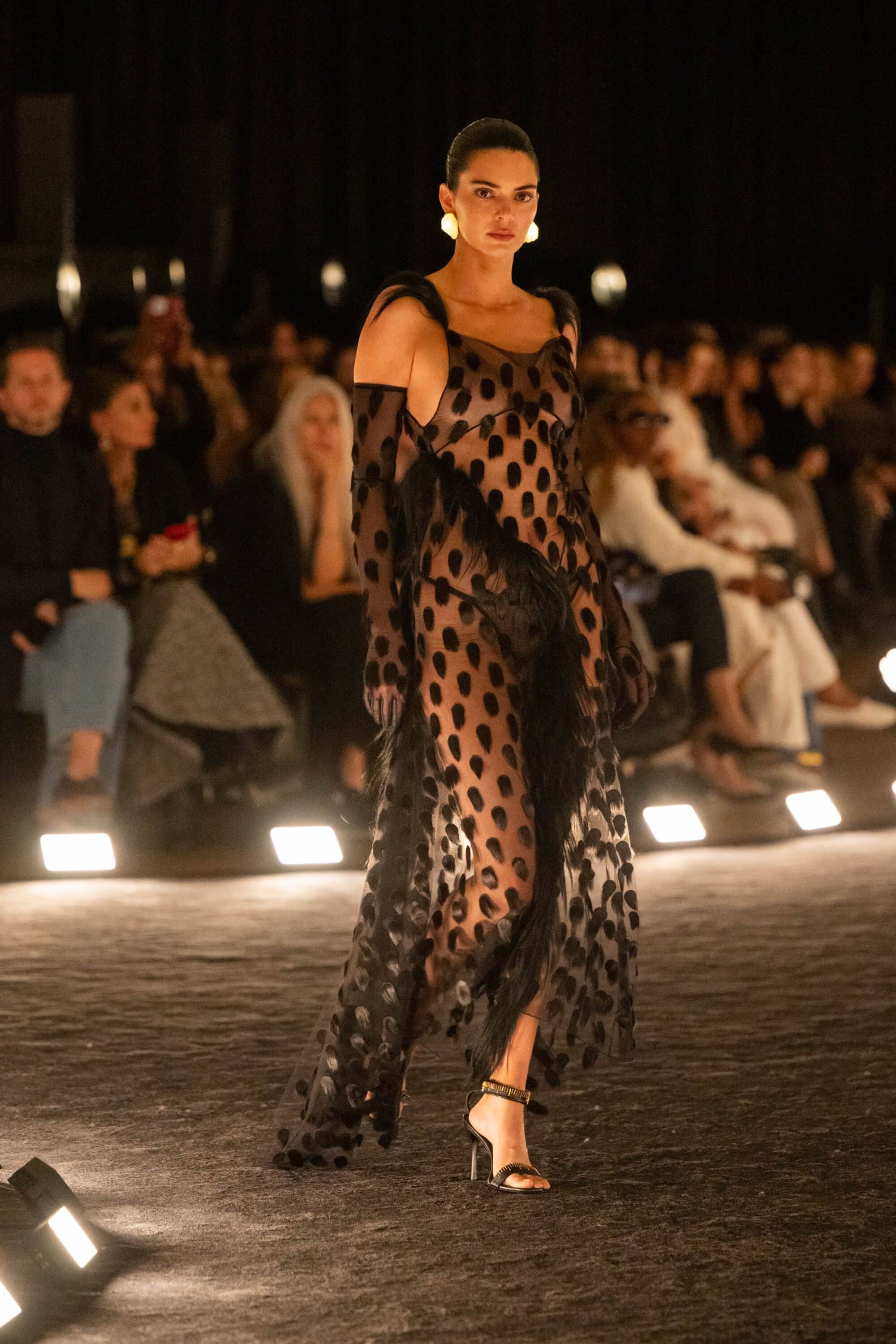
The staging carried equal wit. Originally planned around David Bowie’s narration of Peter and the Wolf, the soundtrack pivoted at the last minute to a stripped-down Lauryn Hill track, before building into Aya. “Up until 30 minutes before the show, it was all Peter and the Wolf,” Roseberry admitted, laughing. “It didn’t feel right, so we changed. Thank God.”
Roseberry’s own path is as unlikely as his designs. Born in Plano, Texas, the son of an Anglican minister, he left FIT early to join Thom Browne in New York, where he rose to head of design over a decade. His appointment to Schiaparelli in 2019 placed him in the lineage of Elsa’s surreal legacy, but from the start he has resisted pastiche, preferring instead to channel her spirit — risk, paradox, theater — into couture for today.
This season crystallized that vision. Drama distilled into simplicity, spectacle translated through line, history remade with humor. In his hands, Schiaparelli is not a museum relic but a living provocation.
And in a moment when fashion often wavers between cynicism and understatement, Roseberry reminded us that couture’s greatest radicalism is still its audacity. His extremes — sharp, surreal, and undeniably Schiaparelli — prove that the house’s air-sucking drama remains very much alive.
